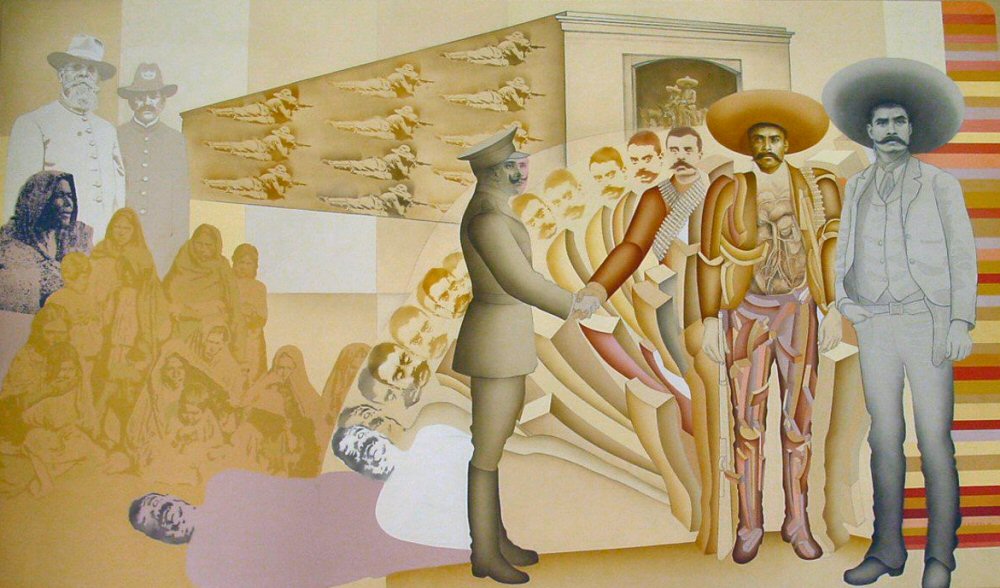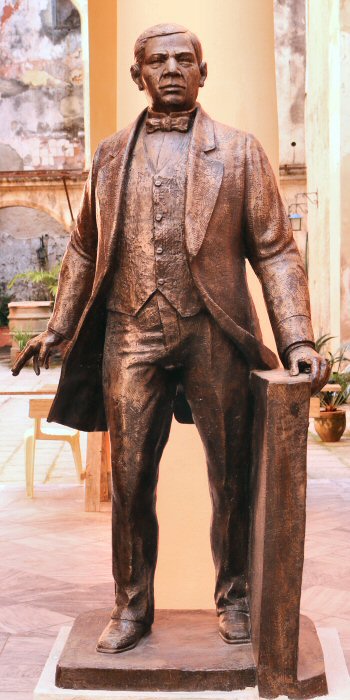
The Casa de Benito
Juárez was
established as a center to promote Mexican culture in Cuba by
demonstrating the history, art, traditions and customs of Mexico
in its halls.
This late 18th century building was
owned by the family Pedroso y Herrera, one of the oldest
families in Havana. Isabel Pedrosa y Herrera was the first
owner. At that time the two-storey building was used as mansion
on the upper floor and as warehouse and as barber shop on the
ground floor. Later, in the 20th century, it was used as a
tenement house. In 1980s the restoration began, and it was
inaugurated as the Casa de Benito Juárez in 1988, to highlight
the strong friendly ties between Cuba and Mexico. The
restoration costs were met by the donations of the Mexican
people, through the mediation of the distinguished Mexican
personalities and the Mexican government.
Benito Juárez visited Havana twice, in
1853 and 1862. In each time he was not the leader of the Mexican
reformist movement. In fact, it is not known exactly, where he
stayed in Havana. It is believed that he worked in a cigar
company during his second stay in Havana for a few months before
his journey to New Orleans.
The ground floor has a nice courtyard
that contains many mural paintings and sculptures of different
artists. The portable mural painting Traición y Muerte de Zapata
(Treason and Death of Zapata) by Arnold Belkin, Canadian son of
Mexican muralism, occupies the whole wall. This large format
painting was completed in 1982, and it brought to the painter
the Grand Prize of the 1st Bienal of Plastic Arts of Havana in
1984. Arnold Belkin later donated this painting to the Casa de
Benito Juárez.
The 1.80-meter tall dog sculptures are
known as Xoloitzcuintle in Mexico (or just Xolo; also known as
Mexican hairless dog). Xoloitzcuintle is a short, hairless breed
of dog that was found even in the tombs of the Mayan and Aztec
native Americans from 3500 years ago. The indigenous people
believed that these dogs would protect the home from evil
spirits, as well as from intruders. In ancient times they were
sacrificed and buried with their owners to guide the soul of
their owners. These sculptures were once shown around the city
in different squares of Havana. They were created by renowned
artists from Cuba, Mexico, Panama and Colombia. The visitor can
see the xolo also at the large painting at the entrance of the
building.
Although the building is named after Mexico's first indigenous president, there's very little if anything at all to be found about him, except for his life size bronze statue in the courtyard at the back of the building. This statue from 2001 is the donation of the state Oaxaca in Mexico to “the brother people of Cuba”, as it is written on the inscription at the statue.

The Casa de Benito Juárez, as indicated with red sign, is located on the Obrapia street #116, between the Mercaderes and the Officios streets, opposite the Casa Oswaldo Guayasamín.
